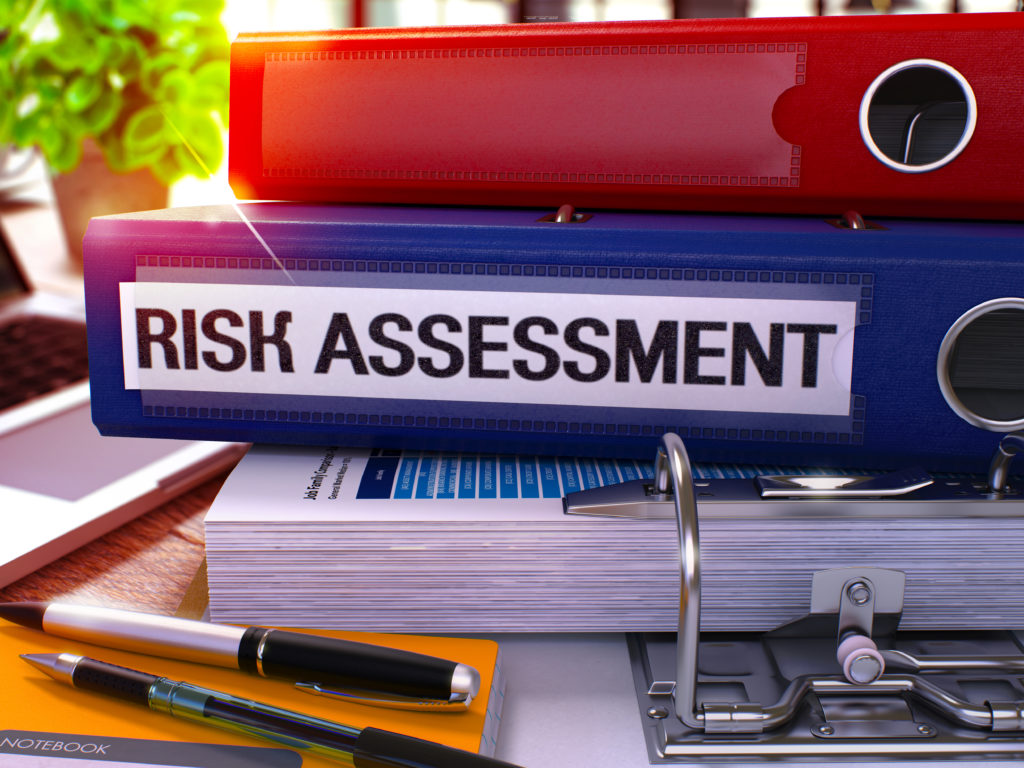What is risk and why do we assess it – subjects that sit at the very heart of the NEBOSH General Certificate, and the health and safety sphere in general.
Risk is the likelihood (the ‘chance’, the ‘probability’) that harm will occur – TOGETHER with the consequences (the ‘severity’ or ‘outcome’) of it if it does. But you knew that, right?
Risk assessment is done so we don’t break the law, isn’t it? No! Risk assessment is done to keep directors and business-owners out of jail! Well, I guess they are one and the same thing, and these are the main objectives of some. . .
The RRC Certificate course notes tell us that the aim of risk assessment is to ensure that hazards are eliminated, or risks minimised by the correct application of relevant standards. but that doesn’t tell us why we want to eliminate the hazards or minimise the risks, does it? We’re getting there but I’m still not 100-per-cent happy, so listen to this: risk assessment is done to keep workers safe and in good health!
That’s what I reckon, anyway and it’s what I’ve been aiming for since 1988 (COSHH was born then, and we’ve grown up together) and what I’ve been trying to get companies I have worked for and clients of mine to believe in, so I hope I haven’t wasted the last 25 years!
Strangely, the first thing we learn about in risk assessment is not risk but hazards. Step one in the assessment process is to identify the hazards – those things we said could cause harm. (So, your test now is to note at least five ‘harms’ that could befall a business – answers provided later).
How many of you start the risk assessment process with a blank bit of paper? Had much success with that? The HSE tells us in its “5 Steps to Risk Assessment” leaflet that risk assessment “is nothing more than a careful look in our workplace at what can cause harm. . .” etc. so, on your blank bit of paper I bet you listed all the hazards? Now I’m going to hazard a guess (no pun intended!) you did NOT assess the risks of ALL of the hazards you identified? Did you really?
Most risk assessors at the basic stage would list only those things they see that they think WILL cause harm, not those that possibly COULD (remember the word ‘potential’?)
So, unless you do list all of the things that actually could cause harm, you’re missing the point. You’re not being ‘systematic’.
So, forget the blank bit of paper. Make up a form with a list of as many ‘hazards’ you can think of. Look at the physical hazards, the chemical and biological things, ergonomics issues, and even psychological ones (these are all explained in your course notes). Now you’re beginning to get a list!
Did you write down ‘slips, trips and falls’? How about ‘chemicals’? And ‘manual handling’? What about ‘fire’? Did you write down ‘stress’? Did you consider sickness absence? Come on, keep up!
Are you beginning to see what I mean by ‘systematic’? We have a system – a system that gets us to look at ALL of the things that COULD cause harm (come on – at least five) – a system that does not leave hazard identification to chance (!) and therefore gives risk assessment a better chance, too.
Let’s say you now have a reasonable list of 20 hazards. Or a good list of 30. Or a really good one of 40? They all COULD cause harm, but do you reckon they WILL? (‘Chance’ again, see?) It’s a bit of a gamble, isn’t it? Risk assessment is a game of chance, but don’t leave it to chance; have a system!
So, from your list of 20/30/40 hazards, do you assess the risks from all of them? Of course you do. But in a great many cases, all you have to do is note ‘little or no risk‘. I actually use the term ‘no issues’, which to me shows that the hazard may be there, but is not likely (chance again) to affect us.
So, on my list for a small office environment you might see:
- Vibration – no issues;
- Noise – no issues other than office background noise;
- Radiation – no issues other than AOR;
- Electricity (supplies) – no issues.
For all those that are there, you will identify those people who are at risk, what precautions you have and whether or not you need more, and some indication of the level of risk. And it’s a good idea to include an action plan – if we need to do more about it.
Why do I bother even to write them down if they are not a risk? Because they are THERE! They are there, somewhere. So how can the risk assessment be ‘suitable and sufficient’ if you haven’t been systematic?
Oh yes – at least five ‘harms’? Personal injury, ill health, fire, product loss, building damage. How many is that? OK – manufacturing down time, keep thinking… more than five already?
Keep thinking about it. Is your risk assessment ‘systematic’?
*Please note that this blog post refers to the old syllabus (before 5th September 2019) for The NEBOSH Certificate examinations. If you require further information on either the old or new syllabus, you can contact us; info@rrc.co.uk / 0208 944 3100

Roger Passey Dip2OSH MIOSH (retired)
Occupational health and safety consultant
Roger has been working in health and safety since 1988 and as a consultant since 2004. Formerly a chartered IOSH member, he now enjoys retired status
